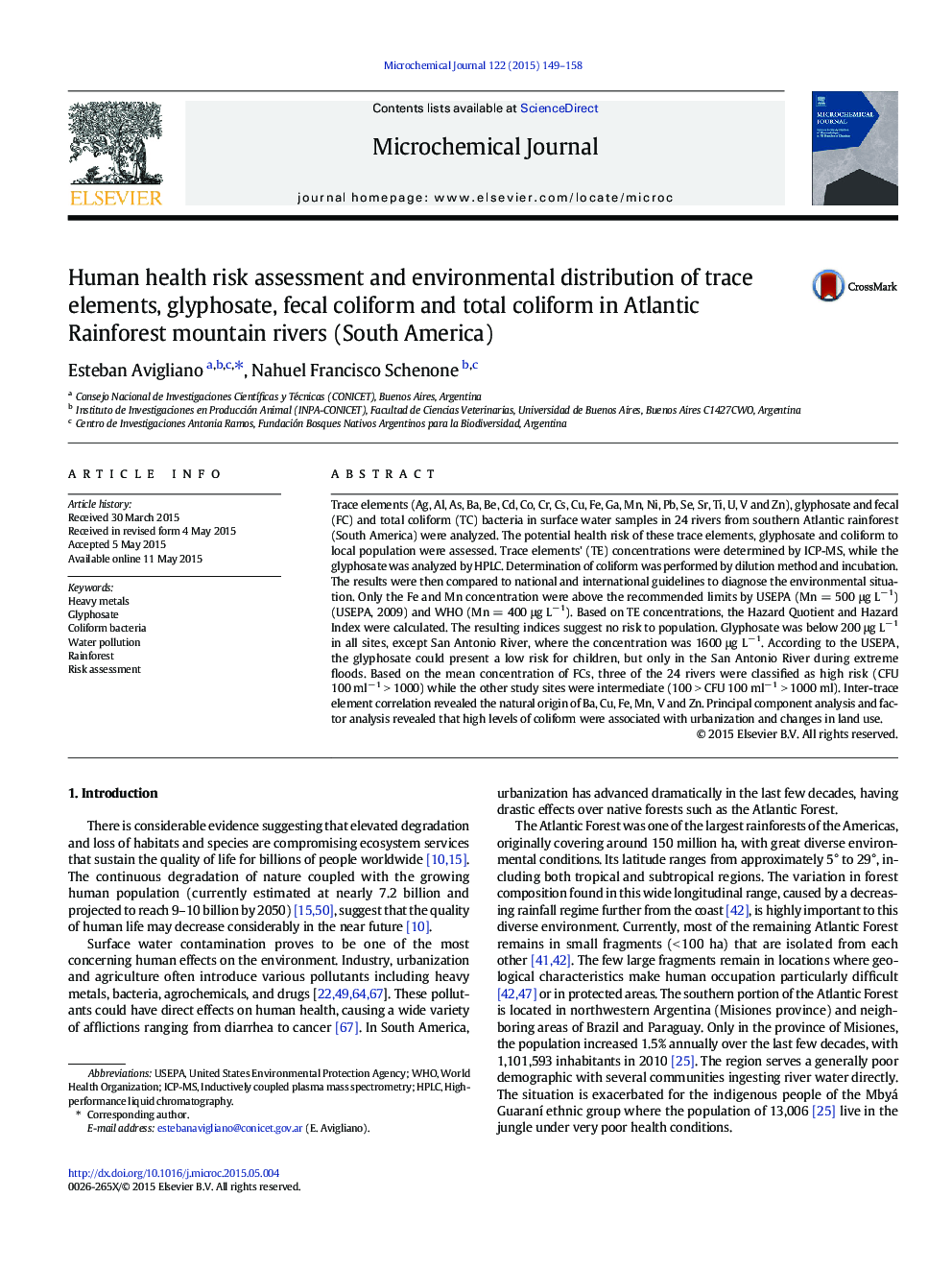| کد مقاله | کد نشریه | سال انتشار | مقاله انگلیسی | نسخه تمام متن |
|---|---|---|---|---|
| 1227773 | 1494872 | 2015 | 10 صفحه PDF | دانلود رایگان |

• Water quality analysis in an international biodiversity hotspot
• Fe and Mn levels were above national and international guidelines for consumption.
• Hazard Quotient and Hazard Index suggest no risk to population due to trace elements.
• Glyphosate levels from San Antonio River suggest low risk to children only during major floods.
• All rivers were classified as high risk or intermediate risk due to fecal coliform concentration.
Trace elements (Ag, Al, As, Ba, Be, Cd, Co, Cr, Cs, Cu, Fe, Ga, Mn, Ni, Pb, Se, Sr, Ti, U, V and Zn), glyphosate and fecal (FC) and total coliform (TC) bacteria in surface water samples in 24 rivers from southern Atlantic rainforest (South America) were analyzed. The potential health risk of these trace elements, glyphosate and coliform to local population were assessed. Trace elements' (TE) concentrations were determined by ICP-MS, while the glyphosate was analyzed by HPLC. Determination of coliform was performed by dilution method and incubation. The results were then compared to national and international guidelines to diagnose the environmental situation. Only the Fe and Mn concentration were above the recommended limits by USEPA (Mn = 500 μg L− 1) (USEPA, 2009) and WHO (Mn = 400 μg L− 1). Based on TE concentrations, the Hazard Quotient and Hazard Index were calculated. The resulting indices suggest no risk to population. Glyphosate was below 200 μg L− 1 in all sites, except San Antonio River, where the concentration was 1600 μg L− 1. According to the USEPA, the glyphosate could present a low risk for children, but only in the San Antonio River during extreme floods. Based on the mean concentration of FCs, three of the 24 rivers were classified as high risk (CFU 100 ml− 1 > 1000) while the other study sites were intermediate (100 > CFU 100 ml− 1 > 1000 ml). Inter-trace element correlation revealed the natural origin of Ba, Cu, Fe, Mn, V and Zn. Principal component analysis and factor analysis revealed that high levels of coliform were associated with urbanization and changes in land use.
Journal: Microchemical Journal - Volume 122, September 2015, Pages 149–158